Printable Sight Words for 3 Year Olds: A Comprehensive Guide
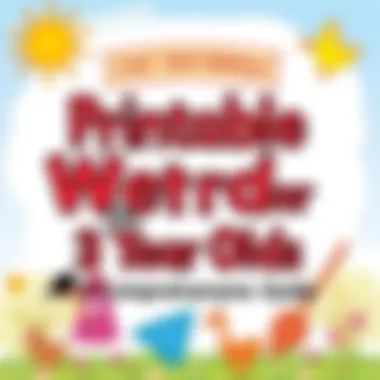
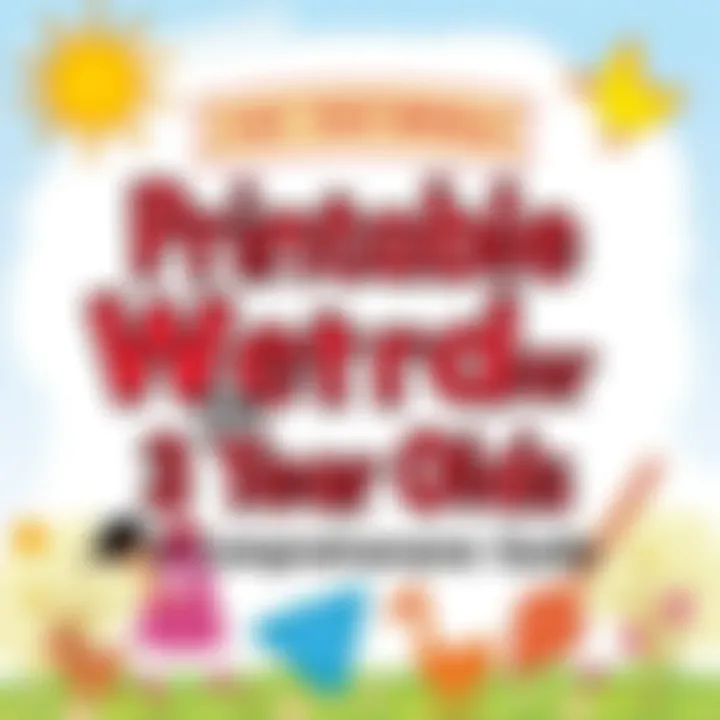
Intro
Learning to read can be one of the most exciting adventures for a young child. At the tender age of three, children are like little sponges, eager to soak up new words and information. Printable sight words serve as an invaluable tool in fostering this early literacy development. They are the building blocks of reading, laying the groundwork as kids begin to recognize familiar words in context.
Sight words are not just arbitrary collections of letters; they often appear in everyday reading materials. Knowing them can help young learners feel more confident, as they encounter these words repeatedly in books and their surroundings. Incorporating printable resources can make this experience even richer, turning what could be a monotonous task into something engaging.
In this guide, we will explore several aspects surrounding sight words specifically designed for three-year-olds. This includes enjoyable activities, effective strategies for teaching, and practical tips for parents and educators. Our goal? To create a nurturing environment where a love for reading flourishes. As we dive deeper, you’ll discover the various elements that support literacy development while making learning fun and inspiring!
"Learning to read is a stepping stone into a world of imagination and wonder for young minds."
Let’s get started with some Fun Activities Ideas that can turn sight words into playful experiences.
Understanding Sight Words
Understanding sight words is pivotal when it comes to nurturing early literacy skills in children. These words, often referred to as high-frequency words, form the building blocks of young readers' vocabularies. By mastering these words, three-year-olds can develop a sense of confidence and familiarity with reading, which is essential for their academic journey. Sight words appear frequently in texts, making them crucial for reading fluency.
When children recognize these words by sight, it alleviates the cognitive load when they read, allowing them to focus on comprehension rather than decoding each word. This is akin to learning how to ride a bike; once a child knows how to balance and pedal, they can explore a wider range of paths and terrains without worrying about wobbling.
In this guide, we look closely at two key areas related to sight words: what they are and why they matter.
Definition of Sight Words
Sight words are words that children are encouraged to recognize instantly without needing to sound them out. These include words like "the," "and," "is," and "to," amongst many others. What makes them special is their high occurrence in written language, which means that knowing them can significantly boost a child's reading ability. In many cases, sight words differ from phonetic words, as their spelling doesn’t always correspond directly to how they sound. For instance, the word "said" doesn’t look like it sounds, which can confuse young learners.
Teaching sight words usually happens using methods like flashcards, visual aids, and games, turning what could be a tedious process into a fun activity. Recognizing these words can enhance fluency and open the door to more complex reading material.
Importance in Early Literacy
The importance of sight words cannot be overstated in the realm of early literacy. First, they lay down a fundamental framework for reading success. When children can quickly identify these words, they become more confident readers. This fosters a positive attitude toward reading as a whole, sparking curiosity and engagement.
Moreover, sight words encourage comprehensive understanding. When a child recognizes simple sight words, they can progress to reading sentences and then stories with greater ease. This smooth transition cultivates a love for books, which can last a lifetime.
Some benefits include:
- Improved reading fluency, making reading more enjoyable.
- Enhanced vocabulary and language skills, which can aid in overall communication.
- Increased self-confidence when approaching new texts.
- Better engagement with reading activities, leading to a richer educational experience.
"Kids who learn sight words tend to excel in their reading journeys, and sight words provide them the wings to soar."
Understanding and teaching sight words, especially to three-year-olds, plays simply an essential role in early education. This foundational step not only supports literacy development but also fosters a lifelong love of reading. As we delve deeper into this guide, we will uncover various tools and resources to support parents, educators, and, most importantly, the little learners themselves.
The Developmental Stage of Three-Year-Olds
Understanding the developmental stage of three-year-olds is essential when introducing them to sight words. This age is a bustling hub of growth and change, a time when children's minds are like sponges, eagerly soaking up new information. However, it’s crucial to recognize the specific characteristics of this age group to tailor learning experiences effectively.
Cognitive Growth at Three Years
At three years old, children are actively developing their cognitive skills. They begin to explore their environment with greater independence, sparking curiosity about the world around them. This is the stage where they can categorize objects, engage in imaginative play, and understand simple cause-and-effect scenarios.
With regard to sight words, tapping into a three-year-old’s cognitive abilities can significantly enhance their learning experience. For instance, when children encounter words they can associate with objects or actions in their everyday lives, their retention improves. Rather than rote memorization, they can connect the words to their experiences, helping them understand the meaning behind the letters.
- Encourage exploration: When introducing sight words, use real-life examples that they can see and touch.
- Incorporate play: Turn learning into a game. For example, use toys or objects in the room to create word associations.
- Prompt questions: Ask them about what they see, which encourages their cognitive processing.
Language Skills and Vocabulary Expansion
Three-year-olds are at a pivotal moment for language development. Their vocabulary is rapidly expanding, and many children can speak in sentences of three to four words. Adding sight words into their daily interactions can greatly benefit their language skills.
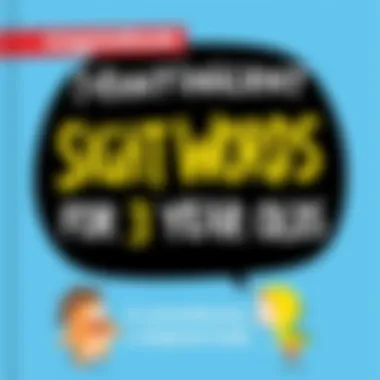
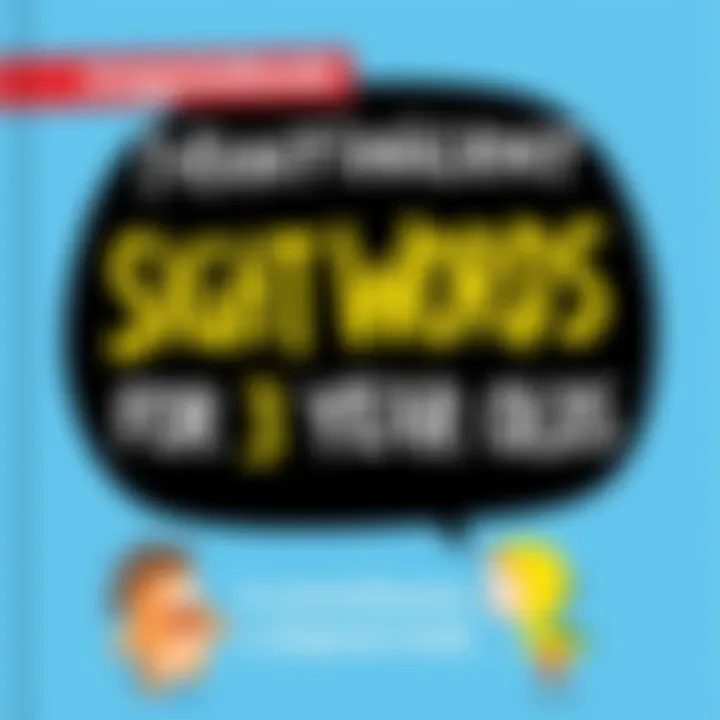
These words help in two main areas: recognition and usage. Recognition occurs when a child can identify words in their environment, while usage relates to how they incorporate these words into their speech and writing.
To support their language development:
- Read together daily: Choose books that include sight words prominently. This not only aids in recognition but also models fluent reading patterns.
- Use repetitive phrases: Incorporate sight words into common phrases and songs. Three-year-olds love repetition, as it reinforces learning.
- Encourage dialogue: Engage children in conversations about their interests, using sight words naturally in context. This builds confidence in their language skills.
Children thrive in environments where language is rich and varied. Surrounding them with words from every angle is key to fostering their ability to communicate effectively.
In summary, understanding the developmental stage of three-year-olds lays the groundwork for effective literacy strategies. By focusing on their cognitive growth and expanding language skills, parents and educators can create a robust learning environment that embraces printable sight words. The influence of this phase not only enriches their vocabulary but also instills a love for reading that can last a lifetime.
Selecting Sight Words for Beginners
Choosing the right sight words for beginners is a fundamental step that requires careful thought and insight. At this tender age, children are like sponges, soaking up everything around them. When it comes to reading, familiar words can provide a solid jumping-off point for early literacy development. Naturally, sight words play a pivotal role here.
First, one must consider that sight words are often high-frequency words found in many texts. These words help kids read fluently and understand sentences more easily. If children can recognize these words instantly, it reduces the load on their cognitive resources, allowing them to focus on comprehension instead of decoding.
But not every child learns at the same pace or in the same way. Thus, it's essential to recognize the varying degrees of readiness and ability each child brings to the table. Tailoring sight words not only makes learning more effective but also ensures engagement.
In selecting sight words for beginners, think about these elements:
- Relevance: Choose words that children encounter regularly in their daily environment, making them relatable.
- Simplicity: Start with simple, one-syllable words that are easier to remember. Examples include "cat," "dog," or "big."
- Progression: Gradually introduce more complex sight words as children gain confidence. This layered approach can make learning less overwhelming.
Ultimately, the goal is to lay a solid foundation for reading that extends beyond mere word recognition. The right selection of sight words ensures that when children read, they experience joy and curiosity rather than frustration.
Commonly Used Sight Words
In this section, we will explore commonly used sight words that serve as a building block for budding readers. Frequently appearing in early readers and picture books, these words form the core of early literacy instruction.
- The: It's everywhere in children's literature. Recognizing this word allows kids to understand simple sentences.
- And: This small word is crucial for connecting ideas. Children will often use it in their speech and writing.
- To: A preposition that weaves through many phrases, helping kids to grasp direction and action.
- Is: It forms the basis of so many sentences. Knowing this word enhances sentence comprehension and structure.
- You: This word personalizes interaction in stories, encouraging children to engage.
These words are valuable, not just in isolation, but when included in short sentences, letting the kids blend sight word recognition with context. Making flashcards or word posters can also enhance visbility and encourage visual memory.
Tailoring Words to Individual Needs
One size rarely fits all, especially in the realm of early literacy. To tailor sight words effectively for each child, one must first assess their current language proficiency and interests. Here are some strategies:
- Assessing Levels: Begin by understanding which words they already know and which ones present challenges. This step can be accomplished through observation or simple quizzes.
- Incorporating Interests: Tailor the words to align with subjects that captivate them, such as animals, colors, or their favorite toys. If a child loves dinosaurs, integrating words like "big" and "green" can spark excitement.
- Frequent Review: Repetition is key. Use sight words in everyday conversations, games, and reading materials to reinforce learning.
Moreover, don’t hesitate to adapt sight words based on children's responses. If a child struggles with certain words, it might be beneficial to slow down and revisit them in different contexts until they feel more at ease. All of this emphasizes the necessity of creating a supportive and responsive learning environment.
"The more personalized the learning experience, the more motivated the child will be to learn."
Focusing on individualized approaches allows for a better understanding of each child’s unique learning pathway, setting them up for effective and enjoyable reading experiences.
Printable Resources for Sight Words
When it comes to teaching sight words to three-year-olds, utilizing printable resources can play a pivotal role in enhancing their learning experience. These resources not only foster an engaging environment but also accommodate different learning styles. With the right printables, parents and educators can strategically embed sight words into daily activities, thus making the learning process feel less like a chore and more like a fun and rewarding activity.
Finding Effective Printables Online
The internet is teeming with valuable resources, but it can be a bit of a minefield to sift through all the options available. To find effective printables, keep an eye out for websites dedicated to early childhood education. Websites from reputable educational organizations, like edu.gov or similar domains, often have well-organized resources specifically designed for teaching preschoolers. Furthermore, sites like Teachers Pay Teachers offer a variety of professionally created printables at different price points—including some free ones.
Here are some tips for locating the best printable sight words:
- Search Keywords: Use phrases like "free sight word printables," or "sight words for preschoolers" to narrow down your search.
- Check Reviews: It helps to read reviews or comments about specific printables before downloading. This can save time and ensure quality.
- Lesson Plan Websites: Many educational websites that provide lesson plans also feature printable materials aligned with those plans. Utilize these resources for comprehensive units.
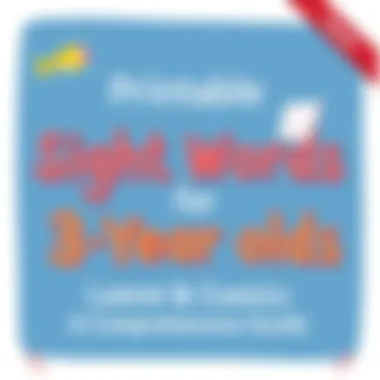
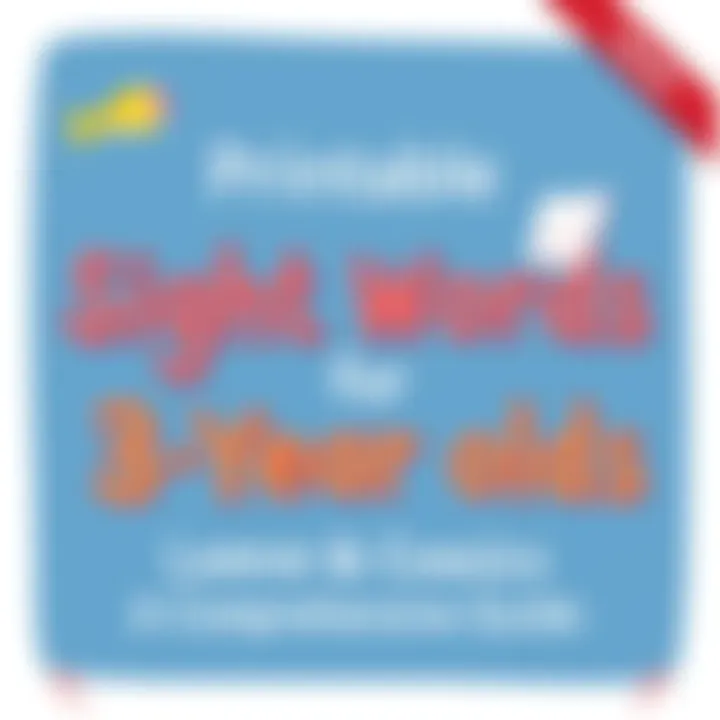
"Choosing quality printable materials can make a substantial difference in a child’s eagerness to learn and retain new sight words."
Creating Custom Printables
Pairing standard printables with custom-made resources can truly personalize a child’s learning journey. Custom printables allow you to choose sight words that resonate with your child’s daily life. This personal touch can facilitate better engagement; for example, creating a list that includes a child's name, favorite toys, or family members.
Here are some beneficial tips for crafting your custom printables:
- Use Simple Design Software: Tools like Canva or even Microsoft Word can help you design printables that are visually appealing and engaging.
- Incorporate Visuals: Add images that relate to the sight words; a picture of a dog next to the word "dog" could enhance understanding significantly.
- Print Adjustments: Consider varying font sizes and types—large, clear fonts are best for young learners. When printing, ensure good paper quality for durability, especially if your child enjoys hands-on manipulation of the printables.
Through creating customized resources, you're not just teaching; you’re creating a unique learning artifact that can foster a child's imagination and understanding of sight words.
Incorporating Sight Words in Daily Activities
Integrating sight words into daily routines is a game changer for early learners. These simple, frequently used words form the backbone of language, giving kids the tools they need to read and understand sentences. When sight words are mixed into activities that children already enjoy, it transforms learning from a chore into a delightful experience. One of the biggest perks is that it allows for repetition without it feeling tedious. Kids have a way of soaking up what they find fun, making everyday moments invaluable teaching opportunities.
"Learning through play engages children's minds in ways that traditional study cannot."
Interactive Games and Play
Using games to introduce sight words turns learning into an adventure. Consider playing a memory match game using flashcards with sight words. Place the cards face down and take turns flipping them over. When a pair is matched, the player reads the word aloud. This activity not only boosts memory but also reinforces word recognition in an engaging way.
Another fun option is a scavenger hunt around the house or yard. Place sight word cards in various locations and give clues that lead to them. As children find each word, they read it out loud, making connections between their environment and their reading skills. It's a playful way to build confidence.
Visual Learning with Flashcards
Flashcards are a tried-and-true method for sight word practice. They cater to visual learners and create a strong mental image of words. To spice things up, parents can encourage their children to decorate their flashcards with drawings that represent the word. For instance, a child could draw a cat on the card for the word "cat." This not only reinforces the word but adds an element of creativity to the process. Additionally, having a set of flashcards available for quick reviews at the dinner table or during waiting times can make use of otherwise idle moments.
Storytime and Reading Together
Reading together with children lays the foundation for developing a love for literature. To incorporate sight words into storytime, select books that include many sight words. As you read, point to the words, allowing children to recognize them visually and hear them pronounced. Encourage little ones to
Tracking Progress and Understanding Growth
Understanding how children absorb and retain information is crucial, especially when it comes to teaching them sight words. Monitoring their progress helps identify areas where they excel or struggle, allowing parents and educators to tailor their methods effectively. Tracking growth is not just about the numbers; it’s a window into a child’s cognitive development, revealing their understanding and mastery of these fundamental words.
Establishing a Routine
Creating a routine for learning sight words can significantly enhance a child’s ability to recognize and use them in various contexts. Consistency is key in forming habits. Engaging in dedicated sight word practice each day helps reinforce the words in a child’s memory.
- Daily Practice: Consider setting aside a specific time each day, perhaps during morning activities or after lunch, to focus on sight words. Keeping these sessions short—around 10 to 15 minutes—can help maintain interest without overwhelming the child.
- Incorporate Activities: Combining routine practice with playful activities, such as games or songs, can make learning feel less like a chore. Children are more likely to engage when they find the learning environment enjoyable.
- Visual Reminders: Use posters or flashcards placed in common areas at home, which can serve as visual reminders. The constant exposure to sight words in their surroundings will further cement this knowledge and provides an easy way for children to refer back to the words they’ve learned.
Assessing Recognition and Usage
Evaluating a child’s recognition and usage of sight words requires a multi-faceted approach. It isn't merely about checking off boxes; it’s about understanding a child’s familiarity and comfort with the words over time.
- Observational Assessment: Pay attention to how easily the child recognizes sight words during reading sessions. Do they point them out spontaneously? Are they able to read them in the right context? Observing these indicators provides insights into their growing literacy skills.
- Engagement in Storytime: During shared reading experiences, ask the child to identify sight words. This reinforces learning and allows you to gauge their comprehension level. Questions like, "Can you find the word 'the' on this page?" make them active participants in their learning journey.
- Tracking Tools: Employ simple tracking sheets where you can mark progress. A chart displaying the words learned and those still needing practice can be visually motivating and help both the child and the caregiver see growth over time.
"The best learning happens when kids don't realize they're learning—when it's just another fun activity in their day."
By establishing a solid routine and employing effective assessment techniques, parents and educators can provide meaningful support in their child's literacy journey. These strategies not only track growth but also promote an environment where learning sight words becomes a rewarding experience.
Tips for Parents and Educators
When it comes to teaching sight words to three-year-olds, parents and educators play a crucial role. The right approach can foster an enthusiasm for reading that lasts a lifetime. Understanding this responsibility allows you to create a tailored learning experience that meets each child's unique needs. Here we’ll dive into two key strategies that make a difference: creating a supportive learning environment and encouraging a love for reading.
Creating a Supportive Learning Environment
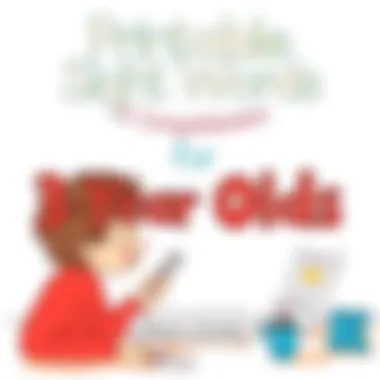
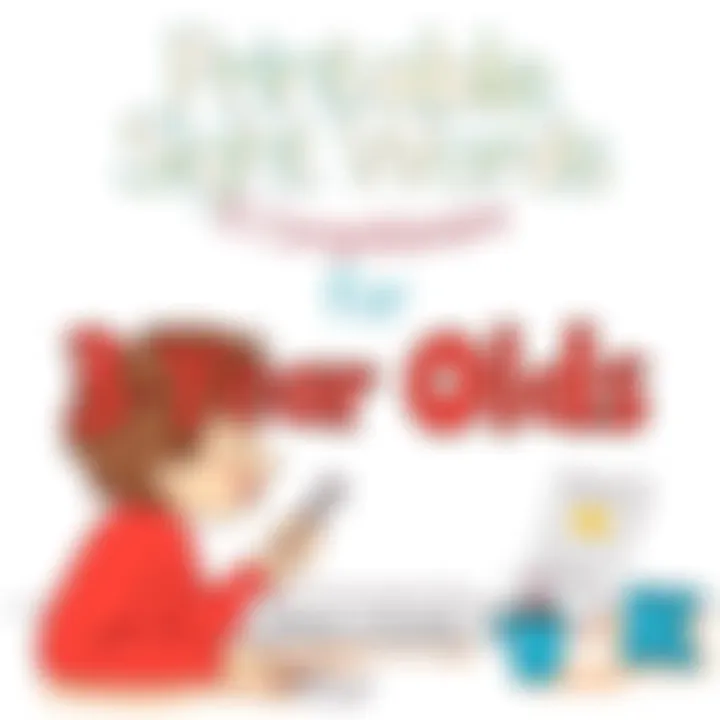
Creating a supportive learning environment is like setting the stage for a great play. It involves crafting a space where children feel valued, safe, and excited about learning. Here are some important elements to consider:
- Comfortable and Inviting Spaces: Ensure the learning area is cozy. Soft seating, colorful decorations, and easy access to books make it inviting. A place that feels good can enhance a child's willingness to engage with sight words.
- Consistent Routines: Young children thrive on routine. Having a set time for reading and word practice provides structure that helps kids know what to expect. This predictability can reduce anxiety and make learning feel more secure.
- Interactive Resources: Utilize various materials to keep children engaged. Flashcards, storybooks, or even apps can make learning sight words enjoyable. Ensure that these resources are at hand and rotating them keeps things fresh.
- Positive Reinforcement: Celebrate successes, no matter how small. This can be done through verbal praise or small rewards. The aim is to nurture confidence, making them feel proud of their progress—this can motivate them to keep learning.
Creating an environment that promotes learning rocks!
"A child's environment is their most magical teacher."
Encouraging a Love for Reading
Fostering a love for reading might not always be straightforward, yet it is essential. Here are a few strategies that can help spark a passion for literature:
- Model Reading Habits: Children learn by observing adults. When they see parents or guardians regularly reading, they are more likely to develop the same habit. Talk about what you read, share interesting stories, and show enthusiasm.
- Diverse Reading Materials: Having a variety of books, from fairy tales to informative books, exposes children to different genres and styles. This variety can pique their interest and lead them to discover what they enjoy most.
- Reading Aloud: When you read aloud to children, use different voices for characters and expressive tones. This not only makes reading fun but also adds an element of drama that captures their attention. Interactive reading, where you pause to ask questions, also builds comprehension skills.
- Incorporate Books into Daily Life: Use everyday situations to talk about reading. For example, during shopping, point out signs or words on packaging. Relating words to real-life contexts can deepen understanding and make sight words relevant.
By focusing on these elements, parents and educators can significantly influence a child's reading journey. Ensuring a nurturing atmosphere and cultivating an appreciation for books sets children on a path toward literacy success. For more insights on early literacy practices, you can refer to resources at education.gov or read.gov to explore a wider range of strategies.
Challenges and Solutions
The journey toward mastering sight words is not a walk in the park. While introducing three-year-olds to sight words can create a foundation for future literacy, the road can be bumpy due to various challenges. Recognizing these obstacles is crucial for both parents and educators. By understanding what hinders learning, one can effectively strategize to overcome these hurdles, leading to greater success in early literacy development.
Common Obstacles in Learning Sight Words
Learning sight words often comes with its set of hiccups. Here are some common issues that learners may face:
- Attention Span: Three-year-olds typically have short attention spans. They may struggle to concentrate during learning sessions, making it hard to remember words.
- Individual Learning Pace: Every child has a unique learning rhythm. Some might grasp words quickly, while others may need more time and repetition.
- Limited Vocabulary: For many children, the vocabulary pool at this age is still shallow. New words may seem foreign and difficult to understand.
- Frustration: When a child finds it hard to remember or recognize sight words, frustration can set in, leading to a reluctance to engage further.
- Lack of Motivation: If learning feels like a chore rather than an adventure, a child may lose interest altogether.
Understanding these challenges is half the battle. It's essential to know that overcoming these obstacles is possible and can be done with effective strategies.
Effective Strategies to Overcome Challenges
The good news is that there are tailored strategies to tackle the hurdles posed in learning sight words. Here are some methods to consider:
- Interactive Learning: Involve children in games that encourage movement, like hopscotch where each square has a sight word. Making learning playful keeps them engaged.
- Frequent and Varied Exposure: Repetition is key, but it doesn't have to be monotonous. Try different activities like singing sight words or using colorful charts to capture attention and make learning enjoyable.
- Use of Visual Aids: Flashcards with pictures and words can help bridge the gap between recognition and understanding. Associating a word with an image gives context.
- Encourage Exploration: Allow children to explore words in books. They should feel free to point out and identify sight words as they appear in stories, making connections between spoken and written language.
- Create a Reader-Friendly Environment: Surround your child with printed materials that include sight words—like posters, labels around the house, or even in their play areas. Making sight words visible reinforces their presence.
- Celebrate Small Achievements: Acknowledge every little win. Whether a child recognizes a word or even attempts to read it aloud. Positive reinforcement boosts confidence and motivation.
“Every child is a different kind of flower, and all together, they make this world a beautiful garden.” – Unknown
In summary, recognizing the common obstacles in learning sight words is paramount. By applying these effective strategies, parents and educators can create a supportive environment that nurtures curiosity and fosters a love for reading. A proactive approach will not only bring sight words to life but also cultivate a learner eager to explore the world of literacy.
Long-Term Benefits of Sight Word Mastery
Understanding the long-term benefits of sight word mastery is essential for fostering reading skills in young learners. Sight words serve as the building blocks of literacy, allowing children to recognize frequent words in texts quickly. Mastering these words can significantly ease their journey through formal reading education. Like hitting the ground running, these kids can focus on grasping meaning and comprehension rather than stumbling over common terms.
Building a Foundation for Future Learning
When children learn sight words at an early age, they establish a solid base for further educational development. This foundation is similar to pourign a strong concrete slab before building a house. It sets the stage for understanding more complex reading materials as they develop. Through consistent exposure and practice with sight words, three-year-olds begin to build their vocabulary and develop familiarity with reading patterns.
- Here are some critical points regarding building this foundation:
- Confidence Boost: Children who recognize sight words tend to feel more confident during reading activities. This confidence can lead to a more positive attitude about learning in general.
- Fluency Development: As they gain recognition of sight words, children can read smoother and more fluently. This skill is crucial for reading comprehension down the line.
- Enhanced Comprehension: Mastering basic words enables children to focus on understanding content instead of decoding each new word. The comprehension skills they develop will serve them well throughout their education.
Connection to Reading Comprehension
Having a strong grasp of sight words directly correlates to a child’s ability to understand what they read. Think of it like speaking a new language; mastering common phrases makes conversations easier. When children can identify sight words instantly, they can focus on analyzing the text’s meaning and context.
"Children who know their sight words well often develop better comprehension skills, leading to greater academic success."
- Recognizing this connection is vital for:
- Critical Thinking Skills: With mastered sight words, kids can engage in discussions about stories and ideas presented, fostering critical thinking.
- Encouragement of Further Reading: Children who understand their reading materials are more likely to explore new texts willingly. They become more adept at seeking out books that challenge and motivate them.
- Preparation for Advanced Literacy: Mastery of basic words lays the groundwork for tackling more complex literature, benefitting them in later grades and setting a strong path for lifelong reading habits.
In essence, mastering sight words is not merely a short-term goal; it impacts numerous aspects of a child’s educational journey, all the way into adulthood. Investing time in understanding and teaching these fundamental skills can yield spectacular dividends in the context of literacy and beyond.



